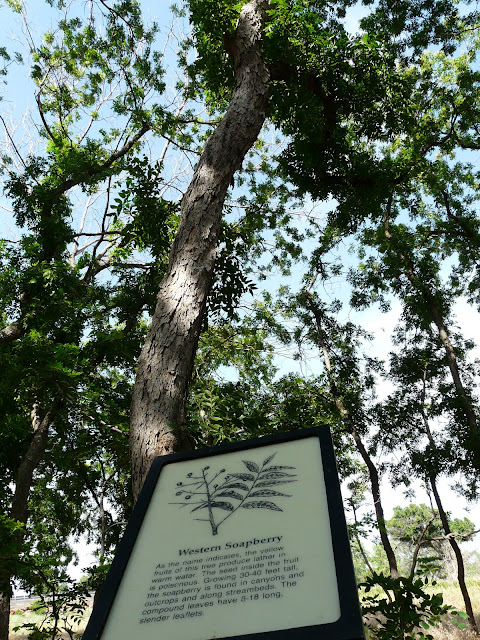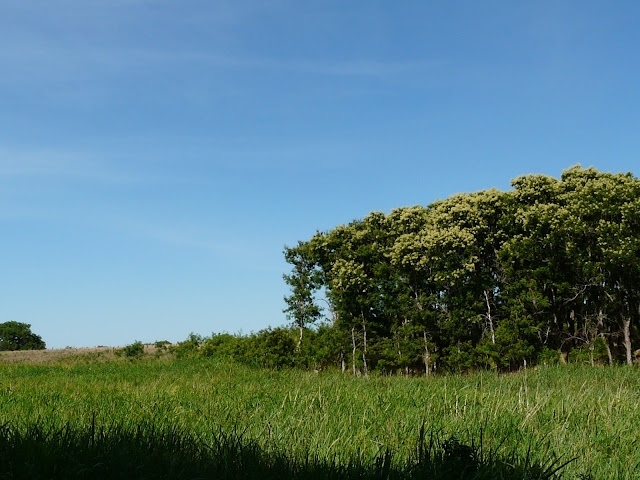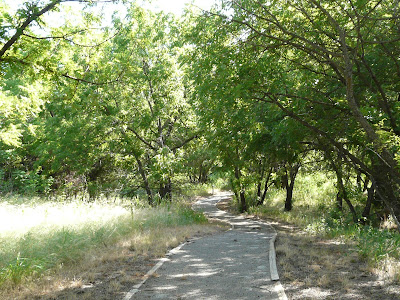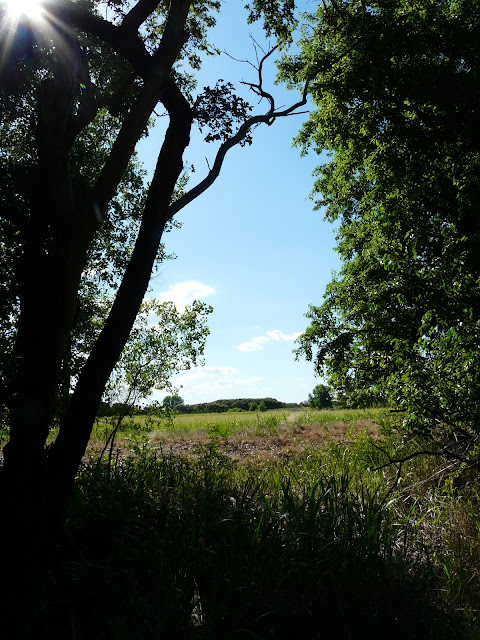We drove the 90 minutes from Wichita Mountains up to a quiet, calm, green, lovely, unassuming place outside of Butler, OK called Washita National Wildlife Refuge, named for the Washita River that gently moves throughout the area. We enjoyed the grace and friendliness of the entire area and loved that everyone you drove past waved as though you had lived there your entire life.
When this area was first settled it was a rolling prairie. It was over-farmed by many of the early settlers in what ultimately lead to the Dust Bowl in the 1930s. One of the old settlement towns called McClure, was located on what is now the refuge. It has become an interesting stop on the refuge drive loop. After the Dust Bowl many of the old homesteads were abandoned as families moved off of their farms and into town. Many of these sites have been taken out of crop production and placed back into native prairie. This open prairie land contributes now to the beauty and vastness of the area.
This bridge was here before the Dust Bowl when McClure was still a town. It is now just a walking bridge that sits next to the bridge that you can drive over.
These are more images from the refuge walking/birding/hiking areas. Because of the warm temps, we loved that there was so much shade!
Washita National Wildlife Refuge was established in 1961 primarily as a stop for migratory waterfowl. Since we visited during the summer, we missed seeing the 80,000 geese and other migratory birds that spend winters here, but we did enjoy some of the overlooks that are designed to give people a closer look at the birds, ducks, geese. This refuge does a wonderful job making the most of what they have to offer both the public as well as the wildlife.

Oliver tried to catch some fish from the Washita River, but we learned later that this part of the River lost most of its fish last summer after a long, hard drought. Thankfully, the area is getting more precipitation this year, but still has a lot of catching up to do before the water levels are back to normal.
We were in the area during the hottest week of the summer. Our car temperature gauge read 107-113 every night after work, even though the car had been in the shade all day! We still managed to enjoy the refuge and get in our time outdoors, always trying to find the shaded areas.
This was an attempt to fish at Foss Lake, on the southern end of the refuge, and also a State Park. It is a large lake that we learned is best-fished if you are on a boat. We did try from this, the only fishing pier - and were unsuccessful. We think there were just too many people going by on boats and jet skis.
Here is the crew at Washita NWR. In the photo above, Oliver is with Levi, the refuge biologist, who is from the area and is also an avid fisherman. He gave Oliver a very nice gift of fishing lures, hooks and fake bait, which he put to use on our next stop at Ozark Plateau NWR, where we visited over the Fourth of July. The photo below is of the rest of the staff: Oliver, John (asst manager), Si (maintenance), Caroline (admin), and Amber (Manager). They are a great group of team players and we really enjoyed the office vibe and working with them all. The week went by way too quickly.
Here is a view of Foss Lake from the southern edge of the refuge.
The refuge is 8070 acres and allocates about 2000 of these acres to local farmers who leave part of their fall harvest for the waterfowl to eat during the winter. There are other acres of the refuge are farmed by the small refuge staff specifically for the birds to eat.
This area of western Oklahoma produces a considerable amount of oil and gas. Custer County is located on top of the Anadarko Basin, one of the largest known reserves of natural gas. There are seven active wells on the refuge. You would never know it as the landscape has no visible scars.








































































